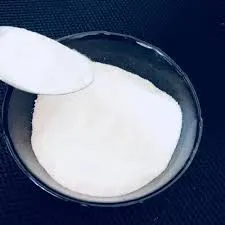
nov. . 26, 2024 09:45 Back to list
Exploring the Viscosity Properties of HPMC Grades for Various Applications
Understanding HPMC Grades and Their Viscosity Properties
Hydroxypropyl methylcellulose (HPMC) is a widely utilized cellulose derivative known for its thickening, emulsifying, and film-forming properties. Due to its versatility, HPMC is employed in various industries, including pharmaceuticals, food, construction, and personal care products. One of the key characteristics of different HPMC grades is their viscosity, which significantly affects their application and performance.
What is HPMC?
HPMC is synthesized from cellulose through the introduction of hydroxypropyl and methoxy groups. This modification results in a compound that is soluble in hot and cold water, making it an excellent agent for forming gels and solutions. The viscosity of HPMC solutions is influenced by several factors, such as the degree of substitution, molecular weight, and concentration.
HPMC Grades and Their Viscosity
HPMC is available in a range of grades, each defined by its specific viscosity, which is typically measured at a defined concentration and temperature. The most common grading system categorizes HPMC into low, medium, and high viscosity categories, with each serving distinct purposes.
1. Low Viscosity HPMC These grades generally exhibit a viscosity range of 5 to 1000 mPa·s. Low viscosity HPMC is often used in applications that require a quick release of active ingredients, such as in pharmaceuticals and dietary supplements. It helps in the formulation of tablets and can enhance flow properties, allowing for better processing and manufacturing.
2. Medium Viscosity HPMC With viscosities ranging from 1000 mPa·s to 4000 mPa·s, medium viscosity grades are suitable for a broad spectrum of applications. They impart good thickening and stabilizing properties, making them popular in food products, paints, and adhesives. In construction, medium viscosity HPMC aids in maintaining workability and improving adhesion in mortars and plasters.
3. High Viscosity HPMC These grades often have viscosities exceeding 4000 mPa·s and are ideal for applications that demand significant thickening and gelling properties. High viscosity HPMC is primarily utilized in cosmetic products, providing texture and stability. In the pharmaceutical industry, it plays a crucial role in controlled-release formulations and can improve the viscosity of suspensions, thus enhancing drug delivery.
hpmc grades viscosity

Factors Influencing Viscosity
The viscosity of HPMC is affected by various factors
- Molecular Weight Higher molecular weight HPMCs generally yield higher viscosity solutions. As the molecular weight increases, the polymer chains entangle more effectively, leading to increased resistance to flow.
- Concentration The viscosity of an HPMC solution rises with higher concentrations. However, there is a threshold where further increases in concentration may lead to diminished returns in viscosity enhancement.
- Temperature Viscosity can be temperature-dependent, with higher temperatures often causing reduced viscosity due to the thermal agitation of molecules.
- pH and Ionic Strength The presence of ions and the pH of the solution may also impact viscosity by altering the state of the HPMC molecules.
Conclusion
Understanding the different HPMC grades and their viscosity properties is critical for formulators across multiple industries. The selection of the right grade depends on the specific application requirements, such as desired texture, flow characteristics, and stability. As the demand for HPMC continues to grow, ongoing research and development efforts aim to refine these grades further, enabling even more innovative applications. Ultimately, HPMC serves as a vital ingredient that enhances the efficacy and functionality of countless products we use daily.
-
What is HPMC?
NewsJun.06,2025
-
Understanding Redispersible Powder: The Future of Construction Materials
NewsJun.06,2025
-
Understanding RDP Powder: The Ultimate Solution for Your Construction Needs
NewsJun.06,2025
-
Pure HPMC: The Ideal Solution for Modern Construction and Building Materials
NewsJun.06,2025
-
Methyl Hydroxyethyl Cellulose: A Versatile Chemical Compound
NewsJun.06,2025
-
Hydroxyethyl Cellulose Power: The Essential Chemical for Various Industries
NewsJun.06,2025







